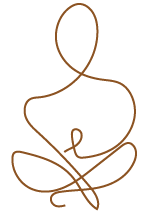
A Holistic Approach to Treating Persistent Pain at Habitual Health Collective
Persistent pain can be exhausting—physically, mentally, and emotionally. At Habitual Health Collective, we believe that pain is never just about the body part that hurts. It’s an intricate interaction between your nervous system, muscles, joints, and mind—and that’s why a single approach rarely works long-term.
Instead, our philosophy is to treat the whole person, not just the symptom. By combining exercise physiology, hands-on therapies, and psychology, we help you move better, reduce pain, and regain confidence in your body.
1. Exercise Physiology: Restoring Strength, Mobility, and Function
Movement is medicine—but only when it’s done with the right strategy. Our accredited Exercise Physiologists use evidence-based programs tailored to your individual needs, ensuring each exercise helps rather than harms.
Why it matters:
-
Improves muscle balance to reduce strain on joints.
-
Retrains movement patterns so your body moves efficiently.
-
Increases tissue resilience to prevent flare-ups.
-
Boosts confidence in your ability to be active without fear.
What it might look like for you:
-
Gentle mobility movements to free up stiff areas.
-
Strengthening exercises to support injured or overloaded tissues.
-
Gradual exposure to activities you’ve avoided due to pain.
2. Hands-On Therapies: Releasing Tension and Restoring Movement
Sometimes the body needs a reset before it can move well again. Our manual therapy practitioners—such as physiotherapist, myotherapist, and acupuncturists —use targeted hands-on techniques to ease discomfort and improve mobility.
Why it matters:
-
Relieves muscle tightness and joint stiffness.
-
Stimulates blood flow for faster tissue healing.
-
Provides symptom relief so you can engage in active rehab sooner.
-
Improves proprioception (your body’s awareness of movement and position).
What it might look like for you:
-
Soft tissue massage to reduce muscle tension.
-
Joint mobilisation to improve movement range.
-
Myofascial release or trigger point therapy.
- Needling or cupping to reduce muscle tension/ pain.
3. Psychology: Understanding and Reframing the Pain Experience
Persistent pain often comes with fear, frustration, and anxiety—which can amplify your symptoms. Our integrated care model includes psychology support to help you address the emotional and cognitive side of pain.
Why it matters:
-
Reduces pain-related fear so you can move without hesitation.
-
Helps manage stress which can influence inflammation and muscle tension.
-
Builds coping strategies for flare-ups and setbacks.
-
Supports lifestyle changes that promote recovery.
What it might look like for you:
-
Learning how your brain processes pain signals.
-
Cognitive Behavioural Therapy (CBT) to shift unhelpful thought patterns.
-
Mindfulness and relaxation training to calm the nervous system.
The Power of Combining All Three
While each approach is valuable on its own, the real transformation happens when they’re integrated. Here’s how they work together:
-
Hands-on therapy reduces immediate discomfort, making it easier to begin movement.
-
Exercise physiology builds the physical resilience needed to keep pain away.
-
Psychology addresses the nervous system and mental patterns that can keep pain lingering.
This holistic loop means you’re not just chasing symptoms—you’re rebuilding a stronger, more adaptable body and mind.
🌱 Your Path to Long-Term Relief
At Habitual Health Collective, we create personalised pain recovery plans that evolve as you do. Whether your pain is from an old injury, a long-term condition, or unexplained origins, we focus on empowering you with the tools and confidence to live fully.
Our commitment:
-
Listen to your story.
-
Collaborate with multiple practitioners.
-
Support you physically and emotionally through the journey.
📚 Reference List
-
Moseley, G. L., & Butler, D. S. (2017). Explain Pain Supercharged. Adelaide: Noigroup Publications.
-
Hodges, P. W., & Tucker, K. (2011). Moving differently in pain: A new theory to explain the adaptation to pain. Pain, 152(3 Suppl), S90–S98. https://doi.org/10.1016/j.pain.2010.10.020
-
Vlaeyen, J. W. S., & Linton, S. J. (2012). Fear-avoidance and its consequences in chronic musculoskeletal pain: A state of the art. Pain, 157(8), 1581–1586. https://doi.org/10.1097/j.pain.0000000000000516
-
Bialosky, J. E., Bishop, M. D., & George, S. Z. (2009). The Mechanisms of Manual Therapy in the Treatment of Musculoskeletal Pain: A Comprehensive Model. Manual Therapy, 14(5), 531–538. https://doi.org/10.1016/j.math.2008.09.001
-
World Health Organization. (2021). Guidelines on chronic pain in children. Geneva: WHO.

